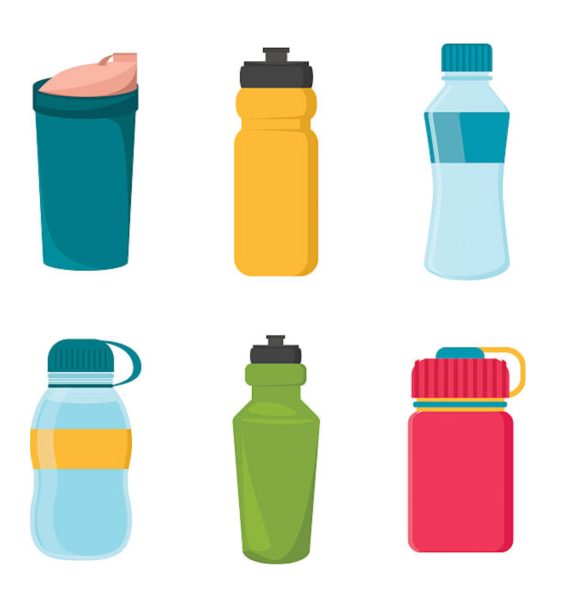What Is It? Top 10 Gemstones

A Gemstone or Jewel is defined as a piece of mineral crystal, rock, or organic material used for jewelry and accessories. The value of gemstones come from both their rarity and beauty, but some gemstones, notably diamond, are valued because of their hardness and cutting ability. Gems are classified as precious or semi-precious.The big four precious stones being diamond, ruby, emerald, and sapphire because of their rarity and quality, with their translucency, fine color, and hardness. All other stones are considered semi precious, but those strict qualifiers are not necessarily set in stone as the modern popularity of opal, amethyst, and pearl can argue their position as “precious”. Qualifications aside, the most important factors of a jewel are how much it is valued by a customer, and whether or not they can afford it.
Since everyone is well aware of the precious stones, I will be going over my top ten favorite semi precious stones based on how pretty or unique they are. Cost isn’t going to be a factor in this list because I am a highschooler working part time and obviously can’t afford any of them. I found most of this information on Wikipedia, as it already had a helpful list of minerals and gemstone species.
- Opal is a mineraloid form of silica that has a high water content, with precious varieties exhibiting iridescent properties. Opal’s opacity can range from transparent to opaque depending on forming conditions, and has background colors varying from white to a rarer black. Fire Opal are transparent or translucent and shine with a brilliant array of warm colors, and are commonly mined in Mexico. In rare cases, opal can pseudomorph with petrified wood, or give it an opalescent sheen, turning it into a wood opal. It has been used in amulets since antiquity, and has been believed to be a bad luck symbol in some cultures, while a good luck symbol in others.
- Moss Agate is a gem formed from silicon dioxide. It gets its name from the winding green minerals within the stone, which form patterns similar to that of growing moss. The rest of Moss agate is a cream colored quartz, which produces a nice contrast between the two colors. The coloring of moss agate is from metals located within it as impurities, and may change as they oxidize. Moss agate has been found in the waters of the Yellowstone River, and was at one point known as mocha stone after the Arabian city which formerly sourced it.
- Tourmaline is a group of minerals with a crystal structure often combined with elements like magnesium and aluminum. Tourmaline comes in a range of colors, and is divided into subgroups species called Schorl, Dravite, Elbaite, with Schorl being the most common. Tourmaline crystals are well formed and have three sides, a feature shared by no other common mineral, and have pyroelectric properties. Schorl comes in dark shades of black and brown, and is susceptible to being magnetic because of its high iron content.
- Carnelian is an orangish brown mineral commonly found in Asia and Europe. Carnelian is similar to Sard, another mineral of chalcedony, with Carnelian being lighter and softer of the two. Its name is an alteration of the word cornelian, because it looks very similar to a plant called the cornel cherry. Ancient Egyptians, Indians, and Assyrians all used Carnelian in jewellery, notably necklaces and signet rings.
- Wulfenite is a mineral composed of lead molybdate with the chemical formula of PbMoO4. Its wide thin crystal structure comes in brillant range of fall colors including red, yellow, orange, and brown. Wulfenite crystals remind me of cedar wood chips, although the mineral’s colors are much more vibrant. It is capable of being produced synthetically through a complex procedure. Pure Wulfenite is colorless, with its range in colors coming from impurities.
- Trinitite, also known as Alamogordo Glass, is green glass left after the detonation of the first nuclear device Trinity in 1945. The glass is composed of sand mixed with quartz and feldspar, and was as sand driven up by the blast got liquefied by the heat. Mineral collectors were sold samples during the late 40’s and early 50’s before the AEC buried most of the remaining material. Its use in jewelry is interesting because of its historical value, and accounting for the fact that it is mildly radioactive.
- Apatite is a group name that refers to hydroxyapatite, fluorapatite and chlorapatite. Apatite is often mistaken for other minerals, and thus its name was derived from the greek word apatein, which means “deceiving”. Because it contains phosphorus, its primary use is in fertilizers, although pigmented varieties are used as gems. My favorite thing about apatite is that its green varieties are known as asparagus stone, a solid pun in my opinion.
- Shattuckite is mineral with the formula of Cu5(SiO3)4(OH)2 and was named after the mine in which it was discovered. It is very similar to planchetite in appearance and form, with both being blue-turquoise in color. In the Shattuck mine, it pseudomorphs with malachite, a process where one mineral replaces the other.
- Jet is a black mineraloid gemstone that is made of coal. Jet black is a term used to describe something that is as dark as possible, and was derived from this material. Jet was worn in mourning dress during Victorian era England, and before that as a good luck charm in Roman times. Also known as black amber, authentic jet burns like coal under flame, a property that sets it apart from imitators such as black glass and Ebonite..
- Bort is a term used to refer to non gem quality diamonds. Bort diamonds are usually opaque, misshapen, and dark, and are used as an abrasive in industrial applications. The reason bort makes my top ten is not because of its appearance, but rather its name. Bort sounds like an onomatopoeia a robot would make if it fell over to me, so i am including it.







